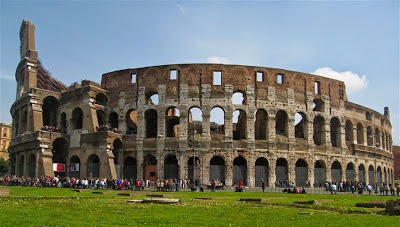1. The Colosseum or Coliseum (also
known as the Flavian Amphitheater), in the center of the city of Rome, Italy.
2. An elliptical amphitheater.
3. Construction began under
the emperor Vespasian in 70 AD and was completed in 80 AD under his successor
and heir Titus.
4. An ancient building built
of concrete and stone, it was the largest amphitheater of the Roman Empire, and
is considered one of the greatest works of Roman architecture and engineering.
5. The Colosseum could hold,
it is estimated, between 50,000 and 80,000 spectators, and was used for
gladiatorial contests and public spectacles such as mock sea battles, animal
hunts, executions, re-enactments of famous battles, and dramas based on
Classical mythology. The building ceased to be used for entertainment in the
early medieval era. It was later reused for such purposes as housing, workshops
and quarters for a religious order, a fortress, a quarry, and a Christian
shrine.
The Colosseum is an iconic
symbol of Imperial Rome. It is one of Rome's most popular tourist attractions
and has close connections with the Roman Catholic Church, as each Good Friday
the Pope leads a torch lit "Way of
the Cross" procession that starts
in the area around the Colosseum.
6. It is the largest
amphitheater in the world. Nothing like it is anywhere else in the world.
7. The Colosseum in Rome
arouses more emotion than any other structure from this ancient culture. I was
moved to tears at all that this structure stood for. It is truly colossal.

No comments:
Post a Comment